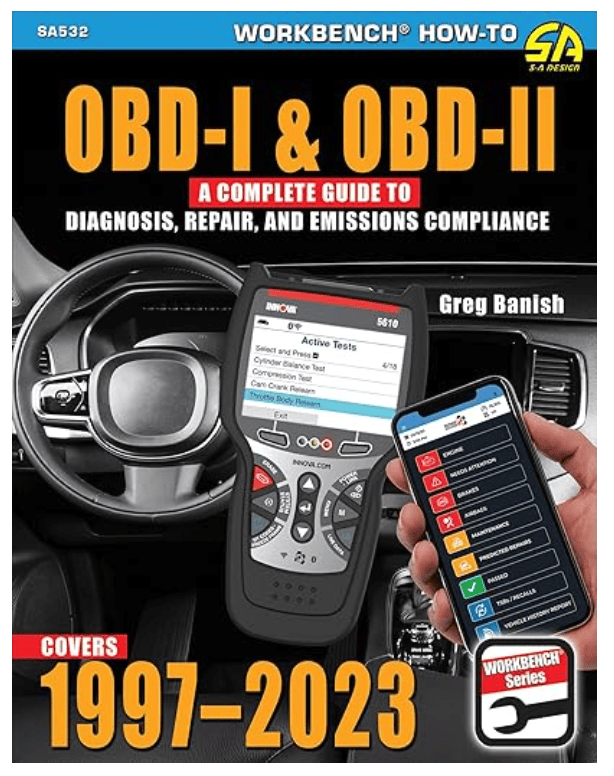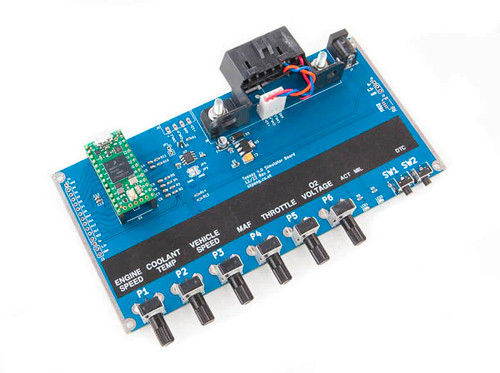Recent Posts
Inside the ECU: A Practical Guide to OBD-I & OBD-II Diagnostics
Posted by on
 Onboard diagnostics (OBD) systems have become a foundational element of modern vehicle design, evolving alongside the automotive industry’s increasing reliance on electronic control technologies. The implementation of OBD-II as a mandatory standard in 1996 for all vehicles sold in the United States marked a pivotal moment in automotive engineering. Rooted in regulatory mandates aimed at reducing emissions, OBD systems were developed to monitor and report the performance of a vehicle's emissions-related components. Over time, these systems have expanded in complexity, now covering a wide range of powertrain and subsystem behaviors, far beyond their original intent.
Onboard diagnostics (OBD) systems have become a foundational element of modern vehicle design, evolving alongside the automotive industry’s increasing reliance on electronic control technologies. The implementation of OBD-II as a mandatory standard in 1996 for all vehicles sold in the United States marked a pivotal moment in automotive engineering. Rooted in regulatory mandates aimed at reducing emissions, OBD systems were developed to monitor and report the performance of a vehicle's emissions-related components. Over time, these systems have expanded in complexity, now covering a wide range of powertrain and subsystem behaviors, far beyond their original intent.
Initially, manufacturers approached emissions regulations independently, leading to a variety of proprietary systems that were difficult to interpret and diagnose. However, as emissions standards became more stringent and widespread, the need for a consistent, universal diagnostic platform became clear. This led to industry-wide standardization, allowing repair professionals, emissions testers, and even hobbyist mechanics to access vehicle diagnostics through standardized protocols and interfaces, such as the 16-pin J1962 connector and common parameter ID (PID) codes.
Despite this commonization, today's diagnostic systems remain highly complex. Modern vehicles rely on dozens of electronic control units (ECUs), interconnected through multiplexed networks such as CAN (Controller Area Network), to manage engine performance, transmission behavior, emissions control, and even advanced driver assistance systems. Understanding how these systems interact—and how to diagnose them when problems occur—requires both foundational knowledge and practical insight.
One major driver of this evolution has been environmental policy. Passing emissions testing has become critically important not just for vehicle owners but also for manufacturers of performance parts and the shops that install them. Regulatory agencies such as the U.S. Environmental Protection Agency (EPA) and the California Air Resources Board (CARB) have imposed multi-million-dollar fines on companies found to be in violation of the Clean Air Act, often based on data retrieved directly from a vehicle’s OBD system. Furthermore, many states now require an OBD-based emissions check as part of the annual registration renewal process. This puts increasing pressure on consumers and technicians alike to ensure that vehicles remain in full compliance—and that diagnostic systems are functioning correctly.
OBD-I & OBD-II: A Complete Guide to Diagnosis, Repair, & Emissions Compliance
In this context, OBD-I & OBD-II: A Complete Guide to Diagnosis, Repair, & Emissions Compliance stands out as a critical resource for understanding the intricate world of automotive diagnostics. Written by Greg Banish, a former diagnostics and performance calibration engineer, the book provides a deep yet accessible dive into modern OEM diagnostic systems. Banish combines technical expertise with hands-on experience to help readers decipher how the Electronic Control Unit (ECU) monitors vehicle health and emissions performance.
The book explains, in clear and relatable terms, the underlying logic of the ECU—what data it collects, how it evaluates that data against internal parameters, and what conditions trigger a diagnostic trouble code (DTC) or the dreaded "Check Engine" light. Instead of attempting to list every potential repair scenario, the author focuses on teaching a methodology: how to begin the diagnostic process, where to look, and how to interpret what the ECU is communicating.
Real-world examples and case studies from Banish’s professional experience provide invaluable context, helping readers avoid common mistakes and approach each problem with confidence. These insights save time, reduce unnecessary part replacements, and lead to more accurate repairs.
The guide is not limited to diagnostics and repair—it also addresses the needs of enthusiasts and performance tuners. Modifying a vehicle for improved performance can often interfere with emissions controls or trigger OBD-II fault codes. Banish offers sound, practical advice for maintaining compliance while making upgrades, ensuring that performance improvements do not come at the expense of environmental responsibility or legal consequences.
Empowering the Reader
Modern diagnostic systems can be both a blessing and a curse. When understood, they become powerful tools for detecting issues early, improving repair accuracy, and optimizing vehicle performance. When misunderstood, they can become a source of frustration and unnecessary expense.
This book bridges that gap in understanding. It empowers readers to harness the diagnostic capabilities of their vehicle’s ECU using widely available scan tools and software. Even consumers with little technical background will find value in learning how to access and interpret OBD data. For those interested in repairing their own vehicles, this book provides a roadmap to success. For others who prefer to work with professional mechanics, it offers the knowledge needed to ask the right questions and ensure quality service.
Whether you’re a technician looking to refine your skills, a performance tuner striving to stay compliant, or simply a vehicle owner interested in better understanding your car’s inner workings, OBD-I & OBD-II: A Complete Guide to Diagnosis, Repair, & Emissions Compliance is an indispensable reference. It demystifies complex systems, provides logical troubleshooting strategies, and helps readers navigate the modern landscape of automotive diagnostics with clarity and confidence. More information...
 Teensy 4.0 OBDII CAN-Bus ECU Simulator Includes Teensy 4.0
Teensy 4.0 OBDII CAN-Bus ECU Simulator Includes Teensy 4.0
This compact and powerful OBD-II ECU simulator is built around the Teensy 4.0 microcontroller (included and pre-installed), offering a versatile platform for developing and testing OBD-II diagnostic tools, vehicle telemetry software, and custom CAN-Bus applications. Whether you're building your own scan tool, developing automotive software, or teaching OBD-II fundamentals, this board provides a realistic and adjustable simulation of an automotive Electronic Control Unit (ECU).
With six built-in potentiometers for on-the-fly adjustment of key engine parameters, developers and educators can simulate varying engine conditions and behaviors in real time. More information...
 Loading... Please wait...
Loading... Please wait...
